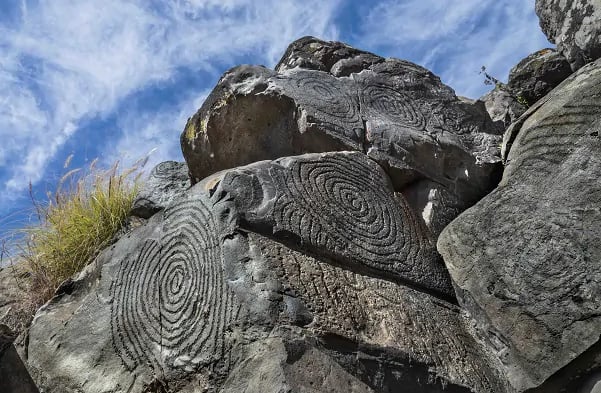The Benahoaritas: The First Inhabitants of La Palma


The Benahoaritas: The First Inhabitants of La Palma
The island of La Palma, located in the Canary Islands, has a fascinating history dating back to ancient times. Before the arrival of Europeans, this land was inhabited by an indigenous people known as the Benahoaritas. They are considered the first inhabitants of La Palma and played a fundamental role in the island's history and culture.
The Benahoaritas were an indigenous people who lived in harmony with nature. They primarily dedicated themselves to agriculture and livestock, growing cereals and other crops that allowed them to survive in a volcanic and mountainous environment. They were also experts in fishing and in making tools and utensils from materials they found in their surroundings, such as stone, wood, and bone.
Their way of life was closely tied to their beliefs and traditions. They had a polytheistic religion, in which they worshipped various gods associated with nature. For them, the land, water, sun, and animals were not just resources, but sacred beings deserving of respect and veneration. This deep connection with nature was reflected in their way of life, their beliefs, and their religious rituals. They also practiced rituals and celebrations that strengthened their community and their connection with the spiritual world.
The arrival of the conquistadors in the 15th century marked a radical change for the Benahoaritas. Despite the difficulties and conflicts, their legacy has survived to this day through archaeological remains, traditions, and legends that are still preserved in Canarian culture. Today, the Benahoaritas are a symbol of identity and pride for the inhabitants of La Palma, reminding us of the importance of respecting and valuing our historical roots.
One of the most impressive manifestations of their culture are the petroglyphs, stone carvings depicting symbols, human figures, animals, and geometric patterns. Among the most notable sites are the petroglyphs of La Zarza. These engravings, dating back several centuries before the arrival of the conquistadors, offer a fascinating insight into the beliefs, myths, and ways of life of the Benahoaritas. The petroglyphs of La Zarza are considered one of the most important examples of rock art in the Canary Islands and reflect the importance of nature and spirituality in their culture.
Furthermore, archaeological remains have been found in El Tendal, including dwellings, utensils, and other objects that demonstrate the existence of a well-organized indigenous community. These remains allow us to better understand how they lived, their customs, and their social organization. The excavation and study of these sites have been fundamental to understanding the history of the Benahoaritas and their cultural legacy.
The arrival of the conquistadors in the 15th century marked a radical change for the Benahoaritas. Despite the difficulties and conflicts, their legacy has survived to this day through archaeological remains, traditions, and legends that are still preserved in Canarian culture. Today, the Benahoaritas are a symbol of identity and pride for the inhabitants of La Palma, reminding us of the importance of respecting and valuing our historical roots.
In short, the Benahoaritas were the first inhabitants of La Palma, leaving a cultural and archaeological legacy that enriches the island's history. The petroglyphs of La Zarza, Belmaco, and the remains of Tendal are living testimonies of their existence and their deep connection with the earth and the cosmos. Understanding and preserving these vestiges is essential to keeping the memory of our ancestors alive and valuing the richness of our traditions.
